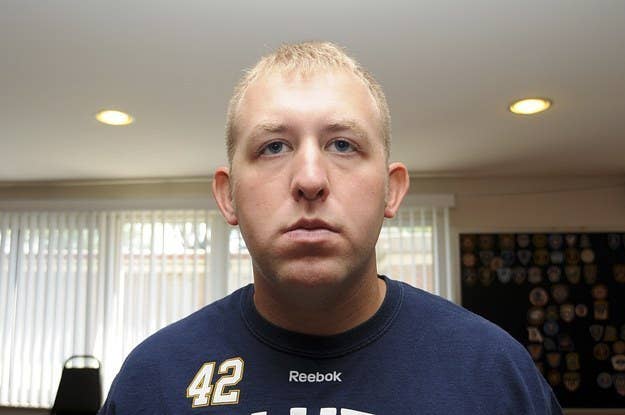
The politically charged investigation into the shooting death of unarmed teenager Michael Brown largely vindicates former Ferguson, Missouri, police officer Darren Wilson, who had become a symbol — if not the public face — for a police department and city government that Attorney General Eric Holder said today was beset with "racial bias and stereotyping about African Americans."
The federal investigation of the Aug. 9 shooting, which sparked months of protests in Ferguson and elsewhere, paints a far different picture from the one seized upon by demonstrators after Wilson fatally shot Brown in the street while trying to detain the teenager following his role in a theft at a convenience store. Several witnesses claimed the 18-year-old Brown had his hands up — effectively giving himself up for arrest — when he was fatally shot, resulting in months of protests in Ferguson and the gradual spread of the "Hands up, don't shoot" chant at rallies around the country.
But the 86-page report treats Wilson's account as credible. It states that physical and forensic evidence, legal analysis, and testimony from 40 witnesses mostly supported Wilson's version of events, which he repeated in five voluntary statements after the shooting.
"Although some community perceptions of Michael Brown's tragic death may not have been accurate," Holder said Wednesday, "the widespread conditions that these perceptions were based upon, and the climate that gave rise to them, were all too real."
While the Department of Justice investigation found substantial evidence of racial bias among Ferguson officials, its investigation into Wilson weren't all that different from those of the St. Louis County grand jury that also cleared Wilson in November.
"Not only do eyewitnesses and physical evidence corroborate Wilson's account, but there is no credible evidence to disprove Wilson's perception that Brown posed a threat to Wilson as Brown advanced toward him," the report said.
"Accordingly, seeking his indictment is not permitted by Department of Justice policy or the governing law."
Wilson's attorney Neil Bruntrager told the St. Louis Post-Dispatch that he was pleased with the breadth of the department's report.
"If people want to have confidence in this decision, they have to explain this," Bruntrager said. "This community has got to heal, and in order to do that, (the Department of Justice) has to stand up for their decision and make sure people understand it so there can be no questions about what happened that day."
Wilson, who resigned from the Ferguson Police Department in November, said he first encountered Brown and his friend Dorian Johnson (referred to as Witness 101 in the report) while driving down Canfield Drive in Ferguson. According to the report, Wilson asked them to use the sidewalk because cars were trying to pass them. When Johnson reportedly told Wilson that he was almost to his destination, Wilson asked him, "What's wrong with the sidewalk?" Wilson said Brown responded, "Fuck what you have to say."
That led to the fateful confrontation in which Wilson said Brown attacked him and attempted to steal his weapon, and then later charged at Wilson, forcing Wilson to defend himself by firing his weapon. Johnson claims that Brown had his hands up in surrender when he was shot by Wilson.
Wilson has described Brown as looking like a "demon" during the confrontation, telling the grand jury that "I felt like a 5-year-old holding onto Hulk Hogan."
Ultimately federal authorities found Wilson's account more believable than Johnson's. They challenged Wilson on a few things, including about why he stopped Brown and his decision to use deadly force in the SUV, among other things.
"Wilson responded to those challenges in a credible manner, offering reasonable explanations to the questions posed," the report said. "Federal prosecutors found Wilson's account to be credible."
Of the 40 witnesses listed in the report, the Justice Department divided them into three groups based on "the nature and credibility of their accounts to a jury." At least seven provided consistent and "corroborative" statements suggesting Wilson acted in self-defense.
One of them, a 58-year-old black man and convicted felon who served time in federal prison, indicated that he would talk only on a condition of confidentiality because there were signs in the Canfield Drive neighborhood that read "snitches get stitches." He said he saw Brown got "in a couple of blows" on Wilson, that Brown didn't have his hands up, and that he saw Brown moving fast toward Wilson after hearing a couple of shots.
The report also concluded that Dorian Johnson's statements to the media "spawned the popular narrative that Wilson shot Brown execution-style as he held up his hands in surrender" but that they lacked credibility when compared with the evidence.
Another witness, whose credibility wasn't deemed sufficient to support prosecution of Wilson, said that he'd spoken with Johnson and Brown the night before the shooting and they did "a whole lot of talking about God" and "about the problems that [they have] been going through."
The witness said it seemed like Brown was "going through a phase."
